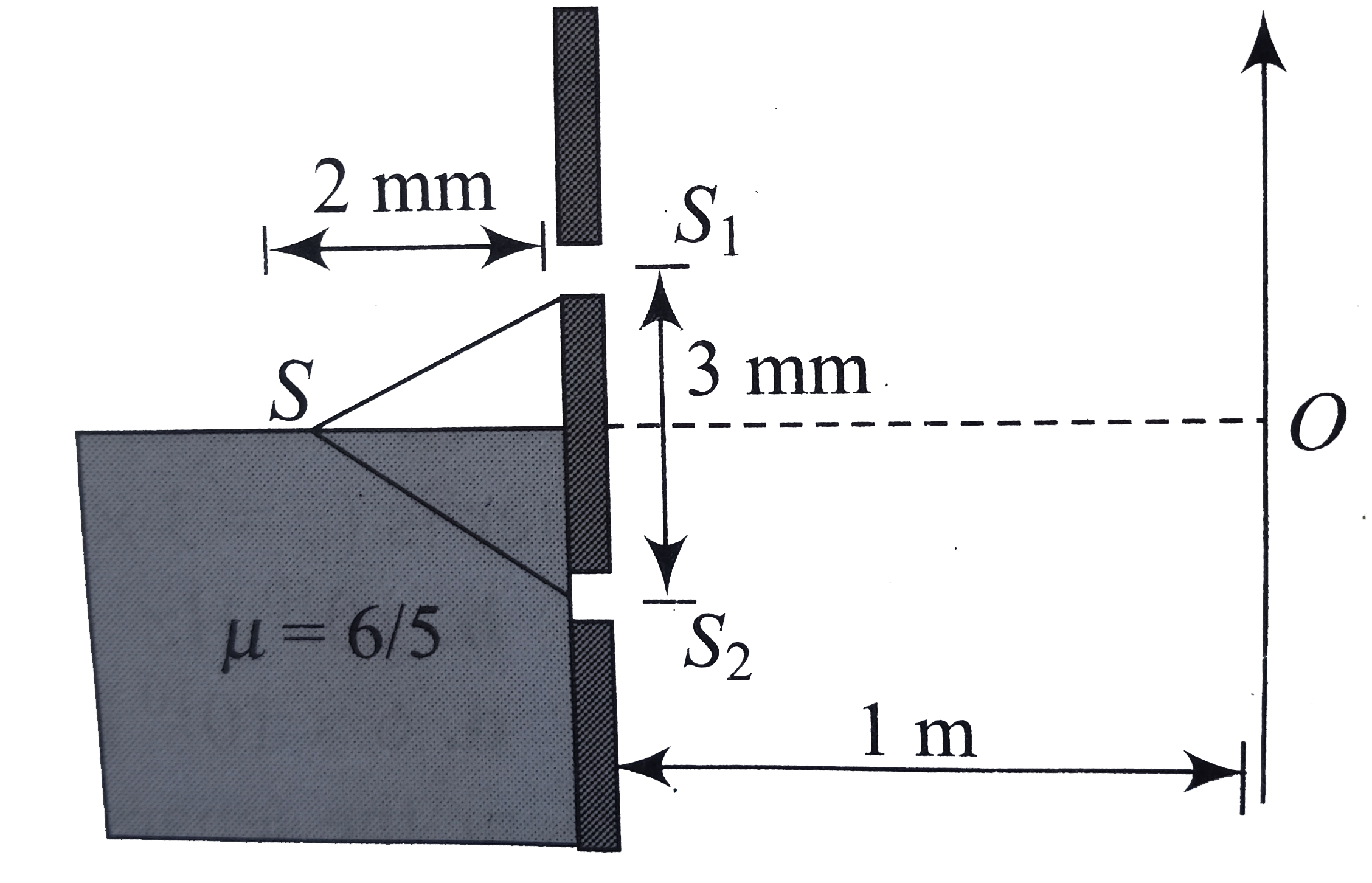White light reflected from a soap film (Refractive index =1.5 ) has a maxima at 600 mm and a minima at 450 nm at with no minimum in between. Then, the thickness of the film is
1
2
3
4
The correct Answer is:C
We know for maxima
2μtcosr=(2n+1)λ12
for minima 2μtcosr=(n+1)λ2
Given here, λ1=600nmandλ2=450nm
Dividing Eq (i) by (ii) and substituting values of λ1 and λ2 we get
(2n+1)λ12(n+1)λ2=1
90m+90=60n+60
30n=30⇒n=1
Using one of the equations we get
In given condition 2μt=(2n+1)λ2
2×1.5×t=(2×1+1)6002
3t=3×6002
⇒t=300nm=3×10−6m=3units
Topper's Solved these Questions
- BOOK - DC PANDEYCHAPTER - WAVE OPTICSEXERCISE - For JEE main (Only one option is Correct )22videos
WAVE OPTICS
- BOOK - DC PANDEYCHAPTER - WAVE OPTICSEXERCISE - For JEE Advanced Only one option is correct23videos
WAVE OPTICS
- BOOK - DC PANDEYCHAPTER - WAVE OPTICSEXERCISE - match column4videos
WAVE OPTICS
- BOOK - DC PANDEYCHAPTER - SOLVED PAPERS 2018EXERCISE - JIPMER22videos
SOLVED PAPERS 2018
Similar Questions
White light incident perpendicular on a soap film gets reflected . It has an interference maximum at 5800Å and a minimum at 4200Å in a visible spectrum. If there is no minimum in between the two bands, find the thickness of the soap film. Take refractive index of film = 4/3.
View SolutionWhite light reflected at perpendicular incidence from a soap film has, in the visible specturm, an interference amximum at 6000Å and a minimum at 4500Å with no minimum in between. If μ=4/3 for film, what is the film thickness ?
View Solution
Knowledge Check
- Question 1 - Select One
White light reflected at normal incidence from a soap film has minima at 6500Å and maxima at 7500Å in the visible region without minimum in between. If μ is 53 for the thin film, thickness of the film is
A7.40×10−7mB9.75×10−5mmC9.40×10−7cmD9.75×10−4mm - Question 2 - Select One
When the plastic thin film of refractive index 1.45is placed in the path of one of the interfering waves then the central fringe is displaced through width of five fringes.The thickness of the film will be ,if the wavelength of light is5890Å
A6.544×10−4cmB6.544×10−4mC6.54×10−4cmD6.5×10−4cm
A parallel beam of white light falls on a thin film whose refractive index is equal to 4/3. The angle of incidence i=53∘. What must be the minimum film thickness if the reflected light is to be coloured yellow most intensively? (tan53∘=4/3)
View SolutionA parallel beam of white light falls on a thin film whose refractive index is equal to 4/3 . The angle of incidence i=53∘ What must be the minimum film thickness, if the reflected light is to be coloured yellow (λof yellow=0.6μm) most intensity ? (tan53∘=4/3)
View SolutionA parallel beam of white light falls from air on a thin film whose refractive index is √3 . The medium on both sides of the film is air. The angle of incdidence is 60∘. Find the minimum film thickness if reflected light is most intense for λ = 600 nm.
View SolutionA parallel beam of light of wavelenght 560nm falls on a film of oil (refractive index =1.4). What should be the minimum thickness of the film so that it weakly transmits the light ?
View SolutionIn Young's double-slit experiment, a point source is placed on a solid slab of refractive index 6/5 at a distance of 2 mm from two slits spaced 3 mm apart as shown and at equal distance from both the slits. The screen is at a distance of 1 m from the slits. Wavelength of light used is 500 nm.
a. Find the position of the central maximum.
b. Find the order of the fringe formed at O.
c. A film of refractive index 1.8 is to be placed in front of S1 so that central maxima is formed where 200th maxima was formed. Find the thickness of film.
 View Solution
View SolutionA thin film (n = 1.25) coats a thick glass plate (n = 1.50). White light is incident normal to the film. In the reflections, fully destructive interference nccurs at 600 mm and fully constructive interference at 700 nm. Calculate the thickness of the film.
View Solution

